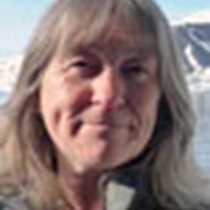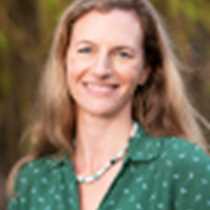At 7 a.m. we stole away from our berth in Oban and headed off to the Isle of Mull. Soon we were at Craignure and boarding our bus to make our way across the island to Fionnphort, on the southwestern tip of Mull. Here we joined the ferry for the short crossing to Iona. It doesn’t take long to fall under the charm of this tiny island, with its historic buildings sprinkled among delightful cottages, gardens, and crofts where Highland cattle graze contentedly.
It was in this special place that St. Columba founded his great Celtic monastery around 563 A.D., and over the years this grew into a major teaching, cultural, spiritual, and artistic centre, under the shadow of many beautiful carved stone high crosses. A national royal burial ground was established at Reilig Oran, and here countless chiefs, kings, and notables were buried under sculptured stones. The religious house of Iona survived even the depredations of the pagan Vikings in the 9th and 10th centuries A.D., and from 1200 A.D. it saw renewed life as the spiritual heart of the Lordship of the Isles.
Like pilgrims we wandered by the 13th century nunnery, where a small house of Augustinian Canonesses had once lived out their daily lives, past Maclean’s Cross to St Oran's Chapel, the oldest of the standing medieval buildings, finally arriving at the Abbey, which was constructed for a new Benedictine community following 1200 A.D. The buildings fell into ruins after the Reformation of 1560 but are now beautifully restored. We gathered at the adjacent St. Columba Hotel for a hearty lunch while overlooking pristine white beaches and ultramarine waters.
Our local driver-guide Sheila conveyed us next to Duart Castle, all the while regaling us with stories and songs, and pointing out the wild red deer, the harbour seals, the rare breed Soay sheep, more Highland cows, the favourite haunts of otters, and the nesting place of white-tailed sea eagles. Duart Castle stands on a dramatic rock overlooking the southern entrance to the Sound of Mull. A stronghold stood on this spot from earliest times, but from the 14th century it was the seat of the Clan Maclean, the dominant clan in the area until the rise of the Campbells. It had fallen into ruin, until it was acquired in 1910 by Sir Fitzroy Maclean who then rebuilt it as a living castle. His descendent Sir Lachlan Maclean still lives there today and, incognito, quietly chatted to many of us.
Then it was back to the ship, and a lovely sail into Tobermory, as rainbows danced around us. In slanting evening sunshine the little port demanded many photographs, the brightly coloured houses strung like jewels around the harbour.









